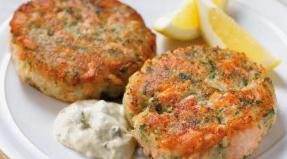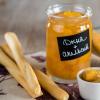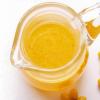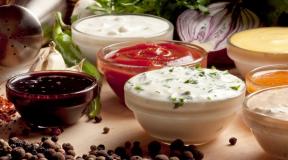Indian spices are great seasonings for dishes! Indian cuisine, Indian spices features.
Indian cooking is inconceivable without the use of spices, herbs and seasonings. Spices are the roots, bark and seeds of some plants, which are used either whole, or in crushed form, or in powder form. Herbs are fresh leaves or flowers. And as seasonings, they use flavors such as salt, citrus juice, nuts and rose water.
It is in the skillful selection of spices and herbs that help to reveal the hidden flavors of conventional products and create unique flavor and aroma ranges that the inimitable originality of Indian cuisine lies. You don't need to add a lot of spices to give food a delicate aroma and flavor and make it appetizing; this usually requires very little. The amount of spices required for the preparation of a particular dish is not strictly limited; ultimately it's a matter of taste.
Although Indian dishes are always seasoned with spices (one or more than a dozen spices can be added to the dish), they should not be too spicy. Peppers usually add spice to Indian food, but you can add them to the dish to your liking or not use them at all - the food will still be delicious and truly Indian.
Spices and herbs, "jewels of Indian cuisine," not only make food tasty, but also make it easier to digest. Most spices have medicinal properties. Turmeric, for example, has diuretic properties and purifies the blood, cayenne pepper stimulates digestion, and fresh ginger has a tonic effect on the body. The art of using various spices to give food a special taste and healing properties goes back to "Ayur-Veda" and "Artha-Shastra" - sacred scriptures, which are more than one thousand years old.
The founder of the Mughal Empire, Babur, who lived in the sixteenth century, highly appreciated the role of spices in Indian cuisine. "If my compatriots mastered the art of using spices as well as the Hindus do," he wrote in his memoirs Babur-na-me, "I would have conquered the whole world." The art of using spices lies in the ability to make masala (a mixture of spices). A chef who knows how to mix spices and herbs can add infinite variety to everyday food, preparing new dishes every day, each with its own unique taste and aroma. Using various combinations of spices, even a dish made from regular potatoes can be imparted with a great variety of flavors.
Before using whole spices, especially those purchased in large quantities, sort them out to clear them of small stems and pebbles.
Store spices in sealed containers or sealed jars in a cool, dry place out of direct sunlight. To keep them from fizzling out with frequent opening of large vessels, store the daily allowance separately in small jars. Label each jar and jar.
Every Indian chef keeps at hand about 25 spices, always freshly ground, of which they make up a unique flavor bouquet. Thanks to this, the dishes acquire a delicate taste.
What are spices for? Why. Www.kowara.net - our world is in question: why.

Cardamom is a classic herb from the ginger family. Healing action Antiseptic, antispasmodic, stimulating, carminative, diuretic, stimulating.
Cardamom has been called the King of Spices for its high cost and versatility.
Cardamom (lat. Ellettaria cardamomum, Hindi: Elaichi, Sanskrit: Ela) is a classic spice that is the fruit of a herb belonging to the ginger family.
Cardamom seeds have a delicate aroma and are a highly prized spice. In the Indian spice market, it is the second most sold and exported spice after black pepper.
AND FURTHER
Although dried herbs tend to taste twice as strong as fresh herbs, try fresh whenever possible.
Since it is the spices and seasonings that give Indian dishes their originality, it makes sense to familiarize yourself with each spice separately (HERE, by clicking on this link) in order to know what properties they have and in what cases they are used. The names of the spices in Hindi are indicated in brackets.
ASAFETIS (hing). Aromatic resin of the roots of the Ferula asafoetida plant. It is used in small quantities. It has a specific taste and medicinal properties. Asafeti da tastes a little like garlic and can be successfully substituted in vegetable dishes. Consuming asafoetida helps prevent flatulence (flatulence) and makes food easier to digest. It is so effective that even a horse can be cured of indigestion with it. Sold in resin or fine powder form. Resin is cleaner than powder, but it needs to be ground. Asafoetida powder usually contains a small amount of wheat or rice flour. The flour makes the asafoetida flavor less harsh and prevents the resin pieces from sticking together. A pinch of asafoetida is placed in hot ghee or vegetable oil for one to two seconds before finishing the masala. This spice is not used in Western and Russian cooking, although it was quite popular in the Roman Empire. If you don’t find asafoetida or don’t want to use it, in most cases you can do without it. 
CLOVE (laung). These dried flower buds of the tropical clove tree (Myrtus caryophyllus), shaped like nails, have always formed the basis of the spice trade. Clove oil has antiseptic properties and a strong scent. It is believed that the custom of "chewing a clove" when addressing the emperor originated in China. In England, during the reign of Elizabeth I, courtiers were also required to chew cloves in the presence of the queen. Clove improves digestion, purifies the blood, strengthens the heart, and also acts as a local pain reliever for toothaches. Cloves fried in a dry pan and chopped are a part of garam masala. A good clove should be oily to the touch and reddish brown in color. As cloves get older, they dry out, shrivel and lose their scent to a large extent.
GINGER FRESH (adrak). This light brown knotty root of the plant Zingiber officinalis is used in all kinds of Indian dishes. Try to buy ginger that is fresh, smooth, not wrinkled, dense to the touch, and low in fiber. Before chopping, grating, slicing, or chopping ginger to make a paste, peel it off by scraping it off with a sharp knife. Use a fine metal grater to grate the ginger. Ground dry ginger cannot replace fresh ginger, because it has a completely different aroma and taste. Dried ginger (sont) is spicier than fresh ginger, so it is recommended to soak it before use. (One teaspoon of dried ginger is equal to one tablespoon of fresh grated ginger.) In medicine, ginger is used for colic and indigestion. It also helps with stomach pain (you need to eat it in small amounts for this), and ginger tea is a wonderful remedy for colds. Ayur Veda recommends consuming one teaspoon of freshly grated ginger with lemon juice and a pinch of salt before dinner. This mixture stimulates digestion and helps to flush out toxins accumulated in the digestive tract.
CAYENE PEPPER (pesa hi lal mirch). A powder made from dried red hot peppers, commonly referred to as "red ground pepper". This spice gives food a spice. Use to taste. 
CARDAMON (Eliichi). Belongs to the ginger family (Elettaria cardamomum). Its pale green pods are mainly used to flavor sweet foods. Cardamom seeds are chewed to freshen the mouth and stimulate digestion. White cardamom pods, which are nothing more than sun-dried greens, are easier to come by but less aromatic. If you used whole pods in cooking, remove them from the dish before serving, and if you come across them while eating, then put them on the edge of the plate - they should not be eaten whole. If your recipe requires only black cardamom seeds that have a pungent flavor, remove them from the pods and crush them in a mortar with a pestle or on a board with a rolling pin. Ground cardamom seeds are also used to make garam masala. Fresh cardamom seeds are smooth, uniform black in color, while old ones become wrinkled and take on a grayish brown hue. 
CORIANDR, or KINZA (hora dhaniya). The fresh leaves of the Coriandrum sativum plant are as widely used in India as parsley is in the West. They are used not only to decorate dishes, but also to add aroma to them. Fresh coriander is worth looking for in the market as it has a very distinctive flavor. If you can't get the coriander, you can substitute parsley for it, but the smell will be different. Fresh coriander is usually sold in bunches. To preserve coriander, you need to keep it in the refrigerator by placing it in a cup of water and placing the cup in a plastic bag. Thus, it can be stored for over a week. Rinse the coriander in running cold water immediately before use. Only the leaves and the tops of the stems, finely chopped, are used. If fresh coriander (or fresh shambhala) is hard to come by, you can grow it yourself. Sow some seeds in a large bowl (or small patch of land), cover them with a thin layer of soil, and water every day. They will germinate in 18-20 days and grow very quickly. Cut the plants when they are 15 cm tall, before they begin to seed. 
Cinnamon (dalchini). Real cinnamon is obtained from the inner bark of the evergreen tree Cinnamomum zeylanicum. This tree is native to Sri Lanka and Western India. Buy thin, sun-dried cinnamon sticks. If you use whole cinnamon sticks in chutneys or rice dishes, remove them before serving. Instead of buying ground cinnamon, buy whole sticks, fry them in a dry skillet, and grind as needed. Another cinnamon variety, the bark of the Cinnamomum cassia tree, is usually sold in chunks or in powder form. This slightly bitter cinnamon with a strong odor, although used very widely, is much inferior in quality to real cinnamon, which is pleasant to the taste and has a sweetish aftertaste. Real cinnamon strengthens the heart and cures diseases of the genitourinary tract. 
Turmeric (haldi). It is the root of a plant from the ginger family, Curcuma longa. The root of all shades, from dark orange to reddish brown, but dried and ground is always bright yellow. It is used in small quantities to color rice dishes and to add a fresh, pungent aroma to vegetables, soups and snacks. Crushed turmeric retains the ability to color for a long time, but quickly loses its flavor. At home, about 30 grams of turmeric is sufficient, unless you cook rice and curry daily. Turmeric must be handled with care as it stains clothes and is highly flammable. According to Ayur-Veda, turmeric purifies the blood, improves digestion, heals ulcers, helps with diabetes, and is used as a diuretic. When applied topically, turmeric has been shown to heal and cleanse many skin conditions.
KARRI LEAVES (kari patti or mitha nim). Fresh leaves of the curry tree (Murraya koenigri), native to Southwest Asia, used primarily for flavoring and flavoring vegetable curries and soups. Dry leaves are easier to obtain than fresh leaves, but less aromatic. When making curries or masala, fresh or dried curry leaves should be sautéed in oil until crisp.
MINT LEAVES (pudina ki patti). The most common varieties are spearmint (Mentha spicata) and peppermint (Mentha piperita). Mint leaves are used to color dishes and give drinks a refreshing taste, as well as to make mint chutney. It also goes well with vegetables, balls and salads. Peppermint stimulates digestion and helps with nausea and vomiting. This plant is easy to grow in your home, in almost any land, in the sun or in the shade. Dry mint loses color but retains its flavor. Mint has tonic properties, improves digestion, stimulates the liver and intestines. 
Nutmeg (jaiphal). It is the kernel of the tropical tree Myristica fragrans. Buy only whole, round, dense, buttery, and heavy nuts. They can be dark or white (due to the lime used to repel insects). Grated nutmeg is used in small amounts (sometimes combined with other spices) to flavor puddings, dairy sweets, and vegetable dishes. It goes very well with spinach and winter pumpkin varieties. It is often part of the garam masala. It is better to grate the nut directly into the dish, since grated it quickly loses its flavor. Store whole or ground nuts in an airtight container. Like many spices, it stimulates digestion and heals chronic rhinitis.
POWDER MANGO (amchur). The green fruit of the Mangifera indica mango tree is cut into slices, then dried and ground into a powder. Used as a flavoring and acidifying additive in vegetable curries. It can also be used to prepare sour drinks and in salads. North Indians use mango powder to add a sharp and sour taste to food as widely as Westerners use lemon. Handle it with care as it is flammable.
ROSE WATER (gulab jal). It is a diluted steam-distilled rose petal essence. It is widely used for flavoring Indian sweets and rice dishes. Rose water can be measured out with a measuring spoon, but if you are using essence or concentrate, be careful with the dosage, measuring drop by drop. By infusing rose petals in water for 24 hours, you can get a diluted analogue of rose water at home. Rose water stimulates the activity of the heart, and when used externally, it is good for vision, since it relieves eye fatigue well. 
FRESH SPICY PEPPER (hari mirch). These bright red or green Capsicum annum pods can be found in Asian stores and supermarkets alike. The pungency of the food comes mainly from the flat, round white seeds in the pods. If all you want is flavor, carefully cut the pod and remove the seeds with the tip of a small knife. If you've handled peppers, wash them thoroughly with warm water and soap, as the essential oils in peppers irritate your skin. Store the pods unwashed, wrapped in newspaper, in the refrigerator.
SEEDS OF BLACK MUSTARD (paradise). Indian cuisine would not be Indian cuisine if Brassica juncea seeds were not used. The seeds of black mustard are small (smaller than that of the yellow variety cultivated in Europe), round, reddish-brown in color. Pungent in taste, nutty smell. Give originality and visual appeal to the dish. Toasting mustard seeds is one of the key steps in making masala. To do this, you need to heat a little ghee or vegetable oil to a high temperature (until it starts to smoke) and add seeds there. After a few seconds, they will begin to crack and burst, turning from black to gray and spreading a characteristic nutty smell. In Bengali cuisine, mustard seeds are sometimes used raw in the form of a paste, ground with ginger, hot peppers and a little water.
SEEDS OF KALINJI (kalindzhi). Black teardrop-shaped seeds of the Ni-gella sativum plant. The seeds of this plant look very similar to onion seeds, but in taste and quality they have nothing to do with it. They are used in vegetable dishes, dalas and vegetable pakor dough and give them a unique flavor. Kalindzhi seeds improve the activity of the brain, vision and aids in digestion. If you were unable to get kalindzha seeds, exclude them from the recipe. * 
CORIANDRA SEEDS, whole and ground (dhaniya sabut and peso). The round, highly aromatic seeds of the Coriandrum sativum plant. One of the main spices used in Indian cuisine; now they are becoming very popular in the West as well. In 1983, America and England imported more than three million tons of coriander seeds each. Coriander seed oil aids in the absorption of starchy foods and root vegetables. Usually coriander is ground just before consumption. It gives food a fresh spring flavor. To get a strong flavor, buy whole seeds and grind them right before use in a coffee grinder. Ground coriander is usually added directly to vegetables instead of masala, but whole coriander seeds should be lightly roasted with other spices.
SEEDS OF INDIAN Cumin (KUMIN, AJGON or AYO-WAN) (safed jira, sabut and pesa). White Indian Cumin Seeds - Cuminum cyminum - An important ingredient in vegetable curries, rice dishes, snacks and dala. Although ground cumin is sold in supermarkets, it is best to grind it yourself. If the recipe calls for toasted cumin, place the correct amount of seeds in a preheated skillet and toast them, shaking the pan occasionally, until they darken slightly and begin to spread a specific flavor. If you need toasted ground cumin, grind the already toasted seeds in an electric coffee grinder or mortar. For cumin seeds to give food their characteristic flavor, they must be properly toasted. When preparing masala, they are one of the first to put them in butter. Cumin seeds promote digestion and share the healing properties of kalindzha seeds. The seeds of black cumin (kala jira) - Cuminum nigrum - are darker and finer than white ones, have a bitter taste and a pungent odor. They do not require as long roasting as white cumin seeds.
DRIED SPICY PEPPER (sabut lal mirch). The pungency and aroma of dried red pepper pods (Capsicum frutescens and Capsicum annum) have made them one of the most popular spices in Indian cooking. If you need chopped peppers, crush them in a mortar or crush them into small pieces with your fingers. Remember to wash your hands thoroughly afterwards. If you do not like peppers, you can put less or not put it in the dish at all. 
TAMARIND (imli). Dried brown flesh (sometimes with dark, shiny seeds) of large, wide pods of the tropical tree Tamarindus indica. Very sour seasoning. "For use, remove the seeds and chop or finely chop the pulp. Boil the pulp pieces for 10 minutes in a small volume of water until they soften and break apart (250 ml water for 225 g tamarind). Then, using a sieve, squeeze out of the pulp as much as possible. more liquid. Discard the remaining pulp and use the liquid as seasoning. If tamarind is not available, you can simulate its taste by mixing lemon juice and brown sugar.
FENNEL (saf). Seeds of the plant Foeniculum vulgare. Also known as sweet cumin. Its long, pale green seeds are similar to those of cumin and cumin, but are larger and differ in color. They taste like anise or licorice. Fennel seeds are sometimes used in seasonings. Toasted fennel is chewed after meals to freshen the mouth and improve digestion. If you can't find it, replace with an equal amount of anise seeds. Fennel improves digestion, stimulates the flow of breast milk in nursing mothers and is very beneficial for gastritis, stomach ulcers and other diseases of the gastrointestinal tract.
BLACK PEPPER (cali mirch). Seeds of the climbing tropical plant Piper nigrum. One of the most widely used spices in the world. It makes food spicy and, like other hot spices, makes it easier to digest. Ground black pepper, although it is more convenient to use, quickly loses its taste and aroma, so we recommend using peas, grinding them in a coffee grinder in the required amount just before use. The white variety of black pepper (safed mirch) is nothing more than an unripe black pepper.
SHAMBALA (methi). Trigonella fenumgraecum. Belongs to the legume family. A favorite plant of the Indians. Leaves and tender stems are used for food. Its square-shaped, flat brownish-beige seeds are indispensable in many vegetable dishes, dal and snacks. Indian women eat shambhala seeds with jaggery after childbirth to strengthen their backs, rejuvenate and stimulate the flow of breast milk. Shambhala stimulates digestion and heart function, helps with constipation and colic. Shambhala seeds have a bitter taste, so do not take more than the recipe says and be very careful when toasting them. They should remain light brown. If the seeds turn reddish-brown during toasting, they will make the dish bitter. Like coriander, shambhala is easy to grow on your own.
SHAFFRAN (Caesar). Saffron is called "the king of spices". These are the dried stigmas of the saffron crocus, Crocus sativus, grown in Kashmir, the Caucasus, Spain, Portugal and China. Each crocus flower contains only three saffron veins, so it takes about 300,000 flowers to produce one kilogram of saffron, and the veins are selected by hand. Saffron is very expensive, but even the smallest amount of it in food is quite noticeable. Be careful not to confuse it with a cheap saffron substitute. They are very similar in appearance and have the same color, but the saffron substitute is completely devoid of the aroma characteristic of real saffron. Best quality saffron - deep red or reddish brown and soft to the touch. With aging, saffron turns pale, dries up, becomes brittle and largely loses its aroma. The aroma of saffron is subtle and pleasant. It imparts a deep orange-yellow color to dishes. It is used to color and flavor sweets, rice dishes and drinks. For a strong aroma and a bright orange color, lightly roast the saffron veins in a dry skillet over low heat, then powder and stir in a tablespoon of warm milk. Then pour the milk into the dish to be flavored. Sometimes saffron is sold as a powder, which smells twice as strong as that of saffron veins. According to Ayur-Veda, saffron has tonic properties and is useful to everyone, without exception. It leaves the skin clear, strengthens the heart and helps with migraines and stomach ulcers. Added to hot milk, saffron makes it lighter.
Publication 2017-11-03 Liked 11 Views 7462
There is no need to talk about the popularity of Indian spices today, so long ago and firmly they settled in our kitchens. "Food without spices is not food at all" - say the Indians themselves, and no one is going to argue with them. , stalls and specialized departments in supermarkets, online stores ... Every day the supply of spices imported from India is growing, but the demand cannot be met. And this is understandable: Indian spices not only bring zest to ordinary food, but also act as natural healers.

In ancient times, spices played the same economic role as oil and gas do today.
Spices are a favorite of Indian cuisine
The Deccan Plateau and the southern slopes of the Himalayas are considered the birthplace of most of the plants from which the spices are made. Purely Indian in origin for Ceylon cinnamon, basil, cardamom, black cumin, Indian bay leaf, black pepper, curry leaves, turmeric, ginger and long pepper.

The world annually consumes more than 10 thousand tons of all kinds of pepper
The cultivation of spices in India today is the same as in antiquity. Plants are sown on plots, sometimes in places that are difficult to access for machinery. They grow like a small ecosystem, almost independently, just like wild nature. The harvest is harvested, which will then turn into excellent Indian spices, in the old fashioned way - by hand. Harvesting women dress in

Cardamom plantations look the same as in the past millennium
Spices are always present in Indian dishes. And in sweet, and in salty, and in spicy. Traditional recipes without spices simply do not exist! Thanks to them, food becomes incredibly tasty, aromatic and, of course, beautiful. And also very useful.

Spices are high in calories, but in one serving they are only 17-25 kcal
Spices in Indian Traditional Medicine Concept
According to Ayurveda (Indian philosophy of healing), everything that surrounds us, the entire manifested Universe is divided into three gunas - Sattva (Goodness), Rajas (Passion) and Tamas (Ignorance). Including what we eat. The herbal products that we consume daily, according to Indian physicians, are also divided into three types.
- Tamasic. These include parts of plants that have grown underground and touched the ground - roots, stems, leaves. Food from them is suitable for workers engaged in hard physical labor.
- Rajasic. These are leaves, branches, stems. Dishes made from them are best consumed by people of moderate activity.
- Sattvic. This species includes only seeds. Such food is useful for those leading a contemplative, measured lifestyle. Everyone who wants to enhance Sattva chooses special Indian spices - ginger, turmeric, saffron, cardamom, cinnamon, coriander and fennel.

Some spices in Ayurveda began to be used before they got into dishes.
8 most popular Indian spices
Do you want to diversify your food, highlight the advantages of ingredients and add new flavors to your usual dishes? We have compiled a must-have of a demanding gourmet just for you. These 8 spices from India are not only the hallmark of a cuisine guru. Indian Ayurvedic specialists have been using them in healing for the past several thousand years. This means that you can not only have a delicious dinner and surprise your guests. But also take care of your health.

Spices were first mentioned about five thousand years ago.
Turmeric... Among the spice medicines, turmeric is the recognized leader. This spice is considered a natural antibiotic. It treats arthritis and gastrointestinal dysfunctions - stomach pains, heartburn, bowel disorders. Indian experts in Ayurveda use it for skin inflammations and for wound healing. But first and foremost, turmeric is a popular Indian spice that gives the dish its wonderful golden color and exquisite sophisticated taste.
A mixture of oil and this spice is used when

According to Ayurveda, turmeric confers prosperity, imparts divine energy and purifies the chakras
Ginger... Ground ginger root has a wide range of uses. First of all, its taste is appreciated. The spice is often added to soups and meat dishes, dough products and drinks. Ginger received another recognition from healers. After all, he, in fact, is a cure for many diseases. The spice stabilizes the functioning of the stomach and intestines, lowers cholesterol levels, and has a positive effect on the functioning of the kidneys and thyroid gland. Ginger root is used both fresh and dried.

It is believed that the use of ginger relieves a person of negative character traits.
Coriander... Coriander seeds are used almost everywhere in the cuisine of the peoples of India. They are prized for their mixed (lemon and peppery) flavor. Used by Indian chefs in the preparation of soups, bean, fish and meat dishes, salads, curries. The spice is renowned for its properties that balance the body and mind. Coriander is an excellent choleretic agent, it increases appetite and alleviates the suffering of allergy sufferers.

Coriander is believed to have magical love properties in China
Caraway... Bitter caraway seeds "know how" to enhance the taste of food, which is why it is added in small quantities. Caraway is the second most popular Indian spice in the world. The first is black pepper. Ayurvedic experts believe that cumin is able to rid the body of digestive toxins. Diseases of the gastrointestinal tract and liver recede with the proper inclusion of this spice in the diet.

Herodotus found caraway seeds while examining mummies in ancient Egyptian pyramids
Carnation... A small dried bud in the company with another Indian spice - black pepper - gives aroma and tangy taste to dishes from any type of meat. Cloves are also good for sweets and drinks. This Indian spice is a natural antiseptic, it saves from nausea during motion sickness, stimulates the appetite and is effective for colds. The spice excellently interrupts odors and has a pungent taste, therefore, it is necessary to use it only in small doses.

Roman legionnaires chewed cloves to freshen their breath
Red and black pepper... These two spices are found in every kitchen, and not only in India. Thus, black pepper is the most popular Indian spice in the world spice market. He is able to improve digestion and help with colds. Topical application of black pepper can stop small wounds from bleeding. Red pepper perfectly copes with circulatory disorders and strengthens the skeleton. He "spurs" the digestive system, while getting rid of toxins. Due to the content of beta-cryptoxanthin, which neutralizes the effects of tobacco, the spice is highly recommended for smokers.

Red pepper keeps its properties longer when ground.

Cardamom... Due to its delicate and mild flavor, cardamom is indispensable in many Indian recipes. It is added to both main dishes and sweets, and c. Several centuries ago, healers believed that the king of spices, as cardamom is also called, is effective in treating almost all diseases. Modern scientists claim that this Indian spice reduces the risk of melanoma, stimulates the heart and the digestive system.

Cardamom does not lose flavor for several months, even in an open container
Cinnamon... Probably the most popular sweet spice on the planet. Cinnamon is made from the bark of an evergreen tree. Thanks to her, baked goods, confectionery products and drinks become much more aromatic and tasty. Many people use cinnamon as a sugar substitute. This Indian spice has antiseptic and detoxifying properties. Used in the treatment of type 2 diabetes. Also, cinnamon is successfully used to restore blood circulation, with flu and colds. By the way, the best cinnamon in the world is grown on the island.

In ancient times, cinnamon was considered a gift worthy of kings.
Indian Spice Curry Powder Recipe
For a long time, the inhabitants of the Malabar Coast (modern state of Goa) ate mainly rice. Fortunately for them, the rice paddies were surrounded by thickets of tropical scented plants. Resourceful ancient Indians mixed turmeric with cardamom and ginger, added black pepper and coconut. And now, the order of boring rice, thanks to the spices, is much tastier and more enjoyable. This is how the world famous curry seasoning was born.

"Curry" is an unusual taste, bright color, delicious aroma and the benefits of medicinal collection
There are a lot of modern curry recipes. There are only four basic spices in the Indian recipe - turmeric, cayenne red pepper, coriander, fenugreek or curry leaves. The list of additional ingredients is much longer - 16 spices. It also includes such well-known basil, mint, cardamom, and little-known to European housewives, galangal root and Cambodian garcinia.

For the best taste, Indian chefs prepare the seasoning before use.
It doesn't take long to make curry powder. If, of course, you have all the Indian spices. The seasoning according to this recipe turns out to be soft, tender. If you want to make it spicier, increase the dose of red ground pepper. So, Ingredients:
- coriander seeds - 3 tbsp. l
- cumin seeds - 2 tsp
- fenugreek seeds - 1 tsp
- fennel seeds - 1 tsp
- yellow mustard seeds - 1 tsp
- white peppercorns - 2 tsp
- cloves - 6 buds
- turmeric - 2 tbsp l
- ground red pepper - 2 tsp

Curry is not suitable for any European dish
Preparation: Place all the spices, except for the turmeric and ground red pepper, into the skillet. Then fry them over medium heat for 10 minutes. The mixture should darken. Cool it down. Then everything needs to be ground in a mill to a powder state. Add red pepper and turmeric. Grind again and sift through the spices through a sieve.

In ordinary stores, instead of "Curry" you can buy a mixture of unknown composition and origin
Indian vegetable stew recipe
For this delicious Indian dish, you need vegetables and real Indian spices. Cooking Ingredients:
- potatoes - 2 pieces
- carrots - 2 pieces
- cauliflower - 1 small head of cabbage
- red bell pepper - 1 piece
- onions - 2 pieces
- garlic - 3 cloves
- ginger root - 3 cm
- cashews - 50 gr
- tomato paste - 2 tablespoons
- cream 20% fat - 200 ml
- ghee - 2 tablespoons
- bay leaf - a couple
- turmeric - 1 teaspoon
- coriander - 0.5 teaspoon
- a pinch of salt

Indian vegetable stew is an excellent dish for a festive table and for every day
Preparation Indian vegetable stew:
Rinse the cabbage and disassemble it into inflorescences. Wash the potatoes and carrots and cut into wedges. Onions - in half rings, and bell peppers - in cubes. Chop the garlic and ginger finely.
Pour vegetables with hot water. Boil for 7-8 minutes. Heat oil in a frying pan, in which fry bay leaves with onions and cashews for about 3 minutes. Then add spices there - garlic, turmeric, ginger, salt. Fry everything for about a minute.
Pour the resulting mixture with tomato paste and simmer for a couple of minutes, stirring occasionally. Put the bell peppers in the pan. Fry for two minutes. Only then add vegetables to the sauce and mix well. Simmer until cooked.

Vegetarian recipes amaze with the variety of options
Of course, the list of popular Indian spices is far from complete. I would like to talk about curry leaves and basil, about asafoetida and anise ... If you are interested in the topic of spices from India, in any "special" store you will be happy to tell you in all details about each one - which dishes to add, what helps, what is incompatible ... Experiment! And bon appetit!
In this review, we will talk about popular Indian spices - we will give a detailed description of the most common types, we will tell you what their features are. We will also discuss where you can buy flavors to diversify your usual dishes and expand culinary possibilities.
What to choose?
Indian condiments and spices are incredibly popular far beyond the borders of the state. This is not surprising, because they:
- They have a bright taste and a unique smell;
- They can change the taste of the dish beyond recognition;
- Decorate prepared food;
- They are famous for their medicinal and healing properties.
By the way, the Indians themselves claim that food is impossible without spices - they are in sweet, salty dishes, hot or desserts. You can verify this by making a short trip around the country. Or by visiting a specialized restaurant.
Spices and seasonings from India have become widespread, but not all of them grow in this country. Some representatives came from the Himalayas or Tibet, as well as from the Deccan plateau. Some grow directly on Indian plantations - they are still manually harvested and processed by women and, sometimes, men.

Let's take a look at the main Indian spices and herbs.
Turmeric
A distinctive feature is a bright yellow color, which allows you to get a golden hue of the dish and a refined taste.

Beneficial features:
- Helps with skin inflammations;
- Used for wound healing;
- Relieves stomach pain and intestinal upset;
- Serves as an excellent antibiotic.
Turmeric is often used as a food and non-food coloring agent. It is also the main ingredient in curry powder.
Coriander
This Indian spice is added to almost all national dishes. The value lies in the unique taste - a mixture of pepper and lemon.

Advantages:
- Increases appetite;
- Has a choleretic effect;
- Improves digestion.
Put in soups, hot meat and fish dishes, add to legumes and salads. Both whole seeds and powder are used for food, coriander leaves are an excellent side dish. You can find out more interesting information about that from our other article.
Caraway
Small bitter seeds with a pronounced pleasant aroma are a popular spice in India and European countries.

Features and properties:
- Removes toxins;
- Treats gastrointestinal diseases.
Significantly enhances the taste of the dish, therefore it is added in small quantities. By the way, this is the second most popular spice, and in the first place is black pepper.
Caraway seeds can be consumed in powder form, more often the seeds are fried or hardened to enhance their taste. We also have an article about that - we advise you to read it!
Cinnamon
While exploring the spices of Indian cuisine, one cannot fail to mention cinnamon - one of the most popular sweet spices in the world. It is added to drinks, baked goods and other confectionery products.

Basic properties:
- Restoration of blood circulation;
- Antiseptic action;
- Improving metabolism;
- Treatment of colds.
An interesting fact - cinnamon is often used as a sugar substitute.
The product is a derivative of the bark of certain plants, used in the form of a powder or whole sticks. The world has known this seasoning for over four thousand years.
Cardamom
The main feature is a pungent, spicy yet pleasant aroma. Taste properties make it possible to add cardamom to sweet and savory dishes, as well as to the national tea - masala.
 Scientists say that cardamom has a beneficial effect on all body systems, helps to improve blood circulation, heart muscle function and reduces the risk of developing cancer. More about, read the link.
Scientists say that cardamom has a beneficial effect on all body systems, helps to improve blood circulation, heart muscle function and reduces the risk of developing cancer. More about, read the link.
Black and red peppers
Indian herbs and spices include many exotic ingredients, but two of them are familiar to all of us - the red and black pepper varieties.
Both of them impart a piquant, tangy flavor.
Black pepper:
- Improves digestion;
- Helps to heal wounds;
- Helps with colds.

Red pepper:
- Strengthens the skeletal system;
- Eliminates circulatory disorders.

Carnation
Small buds-inflorescences have a bright aroma and are added to main dishes, drinks and sweets.

Possesses the following properties:
- Antiseptic action;
- Improved appetite;
- Anti-cold properties.
Please note that to reduce the pungency of smell and taste, it is worth putting cloves in small quantities at the very end of cooking.
Tamarind
An exotic herb in the form of a powder or ready-made paste is extremely popular in the south of the country. It is added to soups, often put in rice. The main distinguishing feature is a pleasant sourness.

Curry Blend
Finally, let's note a mixture of Indian curries. Curry Is a separate spice obtained from dried leaves, and also a powder that contains a lot of ingredients.
The basic version includes four components:
- Red pepper;
- Turmeric;
- Coriander;
- Fenugreek (curry leaves).

Additionally add:
- Fenugreek;
- Kumin;
- Ginger;
- Cinnamon;
- Fennel;
- Cloves.
Cooking options depend on the chef - everyone chooses a set of ingredients to taste.
Now you know what spices to bring from India if you or your friends / family go on a trip around the country. But that's just one way to get the blends you want - we'll cover others below.
Perhaps, spices today occupy a truly royal place in the kitchen of any housewife. Black, red and white peppers, coriander, cumin, bay leaves, cinnamon, nutmeg, cinnamon and cardamom - these and many other spices are used all over the world today to diversify and enhance the flavor and aroma of culinary dishes. What Indian spices can help us with this? And what does Ayurveda say about the use of spices?
USE OF SPICES IN AYURVEDA
- Any spice is not only a natural enhancer of the taste and aroma of food, but, with skillful use, also a natural medicine.
- Not only Indian spices, but also any others, should be selected individually, taking into account the time of year, the natural constitution of a person, his age, character and temperament. Correctly selected seasonings, spices and spices can become indispensable helpers in maintaining human health and can be used in the treatment of a wide range of diseases.
- Ayurvedic texts say that food equally nourishes the body, mind and senses of a person, and therefore, for full saturation in the daily diet, all six tastes must be present: salty, sweet, bitter, astringent, sour and pungent. Achieving a flavor balance is possible, among other things, through the use of spices.
CONDITIONS AND SPICES FOR HARMONIZING INTERNAL ENERGIES (DOSH)
Traditionally, in Ayurveda, in combination with a specific diet, daily routine and a specific lifestyle, spices are used to harmonize the internal energies (doshas) of a person. In order for the spices to benefit your health, before using them, you should establish what type of constitution you belong to.
Vata constitution.
Tastes: bitter, astringent. With an increased level of Vata in the body, the following are used: ginger, hawthorn, cumin, shambhala, anise, kelp, mustard seeds, black pepper, tamarind, turmeric, hops, etc.
Avoid: red pepper.
Pitta constitution.
Tastes: sour, salty, spicy. Fennel, cinnamon, poppy seeds, cardamom, nutmeg, coriander, milk thistle, motherwort, etc. will help to balance pitta in the body.
Avoid: all hot spices.
Kapha constitution.
Tastes: sweet, salty, sour. Help to balance kapha dosha: ginger, horseradish, chili pepper, turmeric, asafoetida, bay leaf, black pepper, cloves, cinnamon, kelp, etc.
Avoid: salt and tamarind.
BASIC INDIAN SPICES
Traditionally in India, seasonings are used in two forms: one-component whole or ground seasonings and spices, as well as specially selected and formulated multi-component spice mixtures called masala. Some of the main spices that Ayurveda recommends to include in your daily diet include turmeric, ginger, fennel, cinnamon and coriander.
Turmeric has traditionally grown in the southeastern part of India from where it was brought to Europe and Russia in the Middle Ages, where it has successfully taken root and is still widely used in cooking. The miraculous properties of this spice are described in many Ayurvedic texts. The seasoning got its name due to the strong dye curcumin, which is part of the roots and leaves of the plant. In addition to it, turmeric is rich in vitamins of group B, C, calcium, iodine, phosphorus and iron. Since ancient times, this seasoning has been used in India as a digestive detoxifier, anti-inflammatory and choleretic. Turmeric improves the condition of the skin, helps the quick recovery of the body after illnesses and surgeries, and is indicated for diabetes and metabolic disorders.
Contraindications: individual intolerance, cholelithiasis and diseases of the biliary tract.
Ayurveda deservedly calls ginger a “universal medicine”. It is widely known that it has a beneficial effect on the work of the gastrointestinal tract, promotes rapid digestibility of food, and also has anti-inflammatory, anthelmintic, wound healing, tonic properties. Contrary to popular belief, ginger has not only a warming, but also a cooling effect, or rather: it normalizes heat exchange in the body, due to which ginger drinks will be useful not only in winter, but also in summer. The use of ginger is indicated for improving the functioning of the kidneys, biliary tract, thyroid gland, strengthening the walls of blood vessels, bone, muscle and cartilage tissues.
Contraindications: individual intolerance, peptic ulcer, cholelithiasis, gastritis and diseases of the duodenum during an exacerbation, bleeding.
Fennel leaves, seeds and even bulbs are widely used in cooking. This plant contains a large amount of vitamins, macro- and microelements, essential oils, has diuretic, antibacterial, antispasmodic, expectorant properties. The ability of fennel to have a mild and calming effect on the digestive tract is used even in the treatment of intestinal colic, increased gas production in infants. In addition, fennel is a good antioxidant, effectively cleansing the body of toxins and waste products. Fennel is also an indispensable remedy for stimulating lactation.
Contraindications: individual intolerance, in case of an overdose, allergic reactions and indigestion are possible.
Cinnamon has unique antiseptic properties due to its ingredient Evengolu. It has immunomodulatory, anti-inflammatory, diuretic, analgesic properties. This spice is effectively used in case of increased acidity of the stomach, absent-mindedness, in the prevention of diseases of the cardiovascular system and in the treatment of diabetes mellitus. Cinnamon lowers blood pressure, normalizes the hormonal and reproductive systems, and improves metabolism.
Contraindications: individual intolerance, bleeding, pregnancy.
Contraindications: individual intolerance, coronary heart disease, diabetes mellitus, increased acidity of the stomach, gastritis and gastric ulcer during an exacerbation, you should not consume more than 4 grams of dry seasoning at a time.
Seasonings that are widespread in India, but little known in Russia and Europe, include: asafoetida, kalondji, mango, tamarind and shambhala. These spices will add flavor and aroma to your meals and will also help you maintain your health. You can buy these spices quickly and easily in our .
If you do not eat garlic and onions, then asafoetida can easily replace these natural flavor enhancers, which, among other things, does not leave a pungent smell after eating, and therefore can be used in the preparation of first and second courses at any time. In addition, this spice improves digestion, gently tones, has mild analgesic and antispasmodic properties. Helps balance Vata and Kapha doshas. This amazing and little-known spice in Russia soothes the nervous system, regulates the hormonal and urinary systems of the body.
Contraindications: individual intolerance, increased acidity of the stomach, with caution and in limited quantities during pregnancy and lactation.
In Russia, the seeds of this plant are known as "black cumin" or "black cumin". Kalindzhi seeds are used in the preparation of soups, legume dishes, as well as added to vegetable snacks and baked goods. The seasoning has a tonic, antidepressant effect on the body, as well as a beneficial effect on the organs of vision and fine structures of the brain. It is used for metabolic disorders, decreased immunity, insomnia, disorders of the reproductive system, decreased milk production in lactating women.
Contraindications: individual intolerance, gastritis, cholelithiasis, coronary heart disease, thrombosis and thrombophlebitis, pregnancy.
Powder from unripe mango fruits is rich in vitamins C, D, B1 and caratin, has a sweet and sour fruit taste, has a beneficial effect on the central nervous system, blood, and has a diuretic effect. Due to the high iron content, it can be included in the diet of pregnant and lactating women, as well as with anemia. It can be used in the preparation of sauces, vegetable salads and drinks.
Contraindications: individual intolerance, children under 2 years of age.
The spice has anti-inflammatory properties, is used in the treatment of skin diseases, allergies, lowers cholesterol and removes cholesterol plaques from blood vessels, and stops bleeding. Can be used for diabetes. It is a natural female aphrodisiac and lowers blood pressure.
Contraindications: individual intolerance, stomach and duodenal ulcers, acidity, cholelithiasis.
This seasoning is made from the dried pulp of the fruit of the Tamarind tree and it is no coincidence that it is the tekst of the mythical country of eternal peace and harmony - Shambhala, because it balances the nervous system, improves brain function, digestion and helps the easy digestibility of protein, which is why it is widely used in cooking legumes. In addition, Shambhala has a beneficial effect on the work of the cardiovascular and hormonal systems, the pancreas, strengthens bone, muscle and cartilage tissues.
Contraindications: individual intolerance, asthma, pregnancy, bleeding, thyroid disease, increased blood clotting.
INDIAN SPICE AND SPICE MIXTURES (OILS)
In addition to single-component seasonings in India, as well as throughout the world, various mixtures of seasonings and spices have been widely used, which can be compiled specifically for the preparation of any type of dish, or in order to harmonize the doshas in the body among representatives of a particular body constitution. ...
"Garam" is translated from the Hindi language as "warm". Thus, garam masala is a spice mixture that has a warming effect. This kit is usually used in winter and in cold weather to prevent ARVI. Garam masala is a versatile mixture of spices that is suitable for preparing both first and second courses, as well as cold appetizers, sauces and salads. This mixture is often added to sweet dishes and teas.
Composition: cumin, coriander, cardamom, cinnamon, cloves, pepper.
Dal is a traditional vegetarian soup made from various boiled beans in India. Accordingly, the spice mixture "Dal Mahani Masala" is used for all dishes that include lentils, chickpeas, mung bean, peas, urd or other legumes.
Composition: coriander, red chili, dried mango, onion, black pepper, dried ginger, salt, garlic, cloves, nutmeg, asafoetida, anise, etc.
A mixture of spices for preparing a traditional Indian drink - masala tea, which is prepared on the basis of milk and a sweetener. Tea, thanks to spices, has a tonic effect and can be used for colds. Traditionally, it is consumed in the morning. Ideal for Kapha and Vata constitutions.
Composition: anise, green cardamom, cinnamon, ginger, cloves, black pepper, star anise.
The phrase "Indian cuisine" usually brings up the association "pepper-curry-rice-tea", moreover, many surmise that cooking in India is very interesting, but almost everyone is sure that the food there is unsuitable for consumption by Europeans because of the ubiquitous pepper. Of course, Indian food is spicy, but as soon as the pepper is reduced to the amount we are accustomed to, thousands of shades of taste, thick and bright aromas of spices immediately appear, and the predominance of plant foods in combination with ancient Vedic knowledge makes Indian cuisine one of the most interesting and useful in the world.
India is a very ancient state. Until now, all the ancient monuments have not been fully studied, and writing in India appeared one of the first on the planet. India in different periods of its existence either became a center of culture, then it was captured by more aggressive peoples, or it was in isolation. All of these periods have influenced and continue to influence cooking. Indian cuisine, like a sponge, absorbs a wide variety of recipes, grinding them in its own way. New foods take root quickly and spawn quirky dishes.
 India is multinational with complex religious traditions. The main religion - Hinduism - prescribes abstaining from meat food and clearly defines what can and cannot be eaten. The principles of healthy eating described in the Ayur-Vedas are being fulfilled in our time - this is the basis of Indian cooking, its essence and the principles of the emergence of new dishes. Here are the main ones:
India is multinational with complex religious traditions. The main religion - Hinduism - prescribes abstaining from meat food and clearly defines what can and cannot be eaten. The principles of healthy eating described in the Ayur-Vedas are being fulfilled in our time - this is the basis of Indian cooking, its essence and the principles of the emergence of new dishes. Here are the main ones:
- Always eat at the same time. After breakfast, at least 3 hours must pass before the next meal, and at least 5 hours after lunch.
- Cook and eat in a pleasant and relaxed environment. Nothing helps digestion like joy in the soul.
- Not all products are compatible with each other. The dish should only contain foods that are easy to digest together.
- Share food.
- Keep clean. Spirituality and purity are sisters. Food must be prepared clean, and you can only eat with clean hands.
- Eat in moderation. Eat half of what you would like.
- Do not drink food. Food is digested with "fire" and cannot be "extinguished" with water.
 Such general principles allowed Indian cuisine to change many times, to absorb the dishes of other peoples, remaining whole, original and certainly bright. Indian cuisine is unthinkable without spices and seasonings. Condiments are the soul of Indian cooking, its magical component. This, so to speak, is the physical part of the kitchen, and the ideological part is again based on Ayur-Veda:
Such general principles allowed Indian cuisine to change many times, to absorb the dishes of other peoples, remaining whole, original and certainly bright. Indian cuisine is unthinkable without spices and seasonings. Condiments are the soul of Indian cooking, its magical component. This, so to speak, is the physical part of the kitchen, and the ideological part is again based on Ayur-Veda:
- the dish should combine all tastes: sour, salty, sweet and bitter (astringent and tart);
- even heavily seasoned food should have its natural taste and aroma.
Let's make a reservation that Indian food is too spicy for our stomachs (especially South Indian), but this has its own explanation. The hot climate and specific sanitary conditions forced the Indians to add more pepper to their food for disinfection and prevention of intestinal ailments. Over the centuries, new generations of Indians have adapted to spicy food, and what in India will be considered "almost no pepper", in Russia they will call "a pepper pot has been dropped into a dish."
 By the way, the Portuguese, who had previously visited the Americas, brought red pepper to India. The plant quickly took root, and the seasoning fell in love and has been used for many centuries in a variety of dishes, even sweet ones. In addition to red pepper, cumin, cardamom, coriander, mustard seeds, cinnamon, turmeric, nutmeg, cloves, black and white peppers are popular.
By the way, the Portuguese, who had previously visited the Americas, brought red pepper to India. The plant quickly took root, and the seasoning fell in love and has been used for many centuries in a variety of dishes, even sweet ones. In addition to red pepper, cumin, cardamom, coriander, mustard seeds, cinnamon, turmeric, nutmeg, cloves, black and white peppers are popular.
The world's most popular curry spice blend is the pride of India. Curry means sauce in Tamil. Another word "curry" is called a plant, the dried leaves of which are added to the mixture of the same name. Curry is also the name given to a dish of stews, legumes and meat served with rice. “Curry” is sometimes called any dish for rice at all, and it’s no wonder what is actually a “true curry”. By the way, there is no exact recipe for curry mixture, this seasoning is prepared shortly before use, grinding, mixing and frying the components. The general rules are the obligatory presence of turmeric and roasting, the rest of the components are easily replaced, which is why the taste of curry in India is always different. Here is a sample list of curry ingredients:

 An impressive list - isn't it? The main ingredient, turmeric, which should be 2/3 or more in a curry mixture, stimulates the immune system and helps fight Alzheimer's disease. Statistics confirm this - in India, people over 60 years old with this disease are several times less than in Western Europe.
An impressive list - isn't it? The main ingredient, turmeric, which should be 2/3 or more in a curry mixture, stimulates the immune system and helps fight Alzheimer's disease. Statistics confirm this - in India, people over 60 years old with this disease are several times less than in Western Europe.
The soul of Indian cooking is spices and herbs. It was for the spices, which in former times were worth their weight in gold, that Christopher Columbus set out to open a new path to India. The bulk of the knowledge of mixing and using spices is in the hands of experienced Indian chefs, but some of it is "publicly available." These are curry mixes and mix types collectively called masala. By the way, Indians call masala any mixture of spices, often additionally fried, so do not be alarmed if you come across several mixtures with the same name and different composition - this is normal.
An exclusively Indian specialty is the roasting of spices. This allows you to significantly enhance the aromatic properties of spices and activate their "fiery essence". Often during a meal, a plate with anise leaves is served, chewing on which can slightly bring down the excess spice.
 Zira (jeera) is one of the important ingredients of Indian spices. The aroma of these seeds is spicy, thick, piney and very soft. A rare Indian dish does without cumin. Zira is often added to dhal or rice, various vegetable dishes and marinades for meat. Zira is an indispensable ingredient in pilaf, which is popular in northern India. It is customary to roast and grind cumin seeds just before adding, since during storage cumin loses some of its aroma. Fry with care - the cumin is highly flammable.
Zira (jeera) is one of the important ingredients of Indian spices. The aroma of these seeds is spicy, thick, piney and very soft. A rare Indian dish does without cumin. Zira is often added to dhal or rice, various vegetable dishes and marinades for meat. Zira is an indispensable ingredient in pilaf, which is popular in northern India. It is customary to roast and grind cumin seeds just before adding, since during storage cumin loses some of its aroma. Fry with care - the cumin is highly flammable.
Turmeric or haldi is the base of almost any Indian spice mixture. Turmeric is made from the root of a plant related to ginger, which is dried and ground into a fine powder. Turmeric does not taste very pleasant and is usually used with other more aromatic spices, but the color is beyond praise. The dish, flavored with turmeric, shimmers from shades of green to gold. Dishes become festive and cheer up. Turmeric is often used in fish or meat marinades, vegetable dishes, soups and drinks.
 Coriander (dhania), or cilantro seeds, is added to most mixtures, as well as yoghurts, dairy dishes, and sometimes coriander is seasoned with mangoes and other fruits. Roast the coriander for a minute or two, then refrigerate and grind.
Coriander (dhania), or cilantro seeds, is added to most mixtures, as well as yoghurts, dairy dishes, and sometimes coriander is seasoned with mangoes and other fruits. Roast the coriander for a minute or two, then refrigerate and grind.
Saffron or kesar are dried crocus stamens. The spice is expensive and rare. Saffron is sometimes confused with turmeric because of its color. Saffron has a bright musky aroma and therefore is used with great care, much more carefully than, say, cayenne pepper. Saffron is added to desserts (khira - rice pudding, srikhand - yoghurt dessert). In the north, saffron is used in meat dishes; southerners add it to rice after soaking it in hot water - so saffron will give all its color. When buying saffron, make sure it is fresh. Never buy powder. The stamens are stored for up to a year, the powder for a couple of months.
Cardamom or elaichi is suitable for both sweet desserts and savory main courses. These citrus-scented, aromatic seeds are often added to meat dishes and beverages. Cardamom is found in any garam masala blend. Cardamom is added to tea and coffee.
 Cinnamon or dalchini in India is used not only in sweet dishes, but is also considered one of the main Indian spices. Cinnamon is another base ingredient for curries and garam masala. Try to warm up the cinnamon before use - it will give all its aroma.
Cinnamon or dalchini in India is used not only in sweet dishes, but is also considered one of the main Indian spices. Cinnamon is another base ingredient for curries and garam masala. Try to warm up the cinnamon before use - it will give all its aroma.
In India, everything is divided into North and South. Southerners love spicy, bright, fragrant rice, they eat chicken and goat meat from meat, but many are very strict vegetarians. Southerners do not eat garlic and onions, tomatoes and beets, the color of the juice of which resembles blood. The main food consists of vegetables, rice, bell peppers, lentils and dates. Coconuts are used in many dishes. Both southerners and northerners eat a lot of legumes - this is the common love of all Indians. In the North, you can see dishes typical for Central Asia - pilaf, fried and baked lamb. Neither in the North, nor even more so in the South, do they eat cow meat. A cow in India is a sacred animal, even Muslims do not eat beef in order not to offend their neighbors. The use of wheat and ghee is considered to be a special feature of the cuisine of northern India. Wheat is used in the north as much as rice in the south. The famous northern dishes include chicken marinated in herbs and baked in a tandoor. In the north, a lot of bread is baked, mainly flatbread. In the east of India, closer to the Bay of Bengal, there are amazing fish dishes. The fish is marinated, stewed, fried. Other seafood can be added to fish - mussels, shrimps. Coconuts, dates, bananas and other tropical fruits grow in the southwest of India. The southwest is characterized by an increased pungency of dishes that even the inhabitants of northern India cannot eat.
 Some of the most beloved dishes in India are considered: thick soup made from crushed lentils with vegetables and yogurt with curry - dhai. India is very fond of soft types of cheese (similar to feta cheese), for example, shahi paneer - soft creamy homemade cheese cooked with potatoes and cream. At the end of the meal, it is customary to chew betel leaves with grains of cardamom and anise. This "dessert" aids digestion and makes digestion easier.
Some of the most beloved dishes in India are considered: thick soup made from crushed lentils with vegetables and yogurt with curry - dhai. India is very fond of soft types of cheese (similar to feta cheese), for example, shahi paneer - soft creamy homemade cheese cooked with potatoes and cream. At the end of the meal, it is customary to chew betel leaves with grains of cardamom and anise. This "dessert" aids digestion and makes digestion easier.
The most popular beverage is black strong brewed tea. I must say that in India they drink exclusively black (or red according to the Chinese classification) tea, brew it very strongly and even brew it. Hot milk, spices, sugar or honey are certainly added to tea. Such "tea" in India is drunk in huge quantities at any time of the day. Occasionally, cold tea is prepared with lemon, honey and ginger. This drink refreshes well in the heat. Whipped yogurt with fruit and lemon - lassi, lemon nimbu pani, juice of mango, coconut and other fruits, mashed fruits can also be considered popular drinks, but they are drunk a little less often than tea. It is not accepted to drink alcohol either at the table or just like that. Some states even require a special permit to drink alcohol. But, despite the strictness, India has its own alcoholic feni from the juice of coconut trees and cashews. It is served only on big holidays, for example, for a wedding.
 Indian sweets are a separate topic. Numerous dessert recipes, unique taste and the use of exclusively natural ingredients (milk, honey, cereals, nuts and fruits) have brought Indian sweets worldwide fame. Vedic culture allows eating sweets without restrictions, which Indians use to the fullest.
Indian sweets are a separate topic. Numerous dessert recipes, unique taste and the use of exclusively natural ingredients (milk, honey, cereals, nuts and fruits) have brought Indian sweets worldwide fame. Vedic culture allows eating sweets without restrictions, which Indians use to the fullest.
West Bengal is called the cradle of sweets. It is believed that it is from India that the so-called "oriental sweets" of Iranian, Turkish and other cuisines originate. There are so many sweets that there is nothing left but to mention only the most famous of them. Rassgulla - cottage cheese balls in pink syrup, gulab-jamun - almond balls in honey, mash - a dessert with milk froths and sweet sauce (there is something similar in Russian cuisine - kaymak, sweetened milk froths used to put layers of Guryev porridge), jalebi - pancakes in syrup, truly Indian ice cream with cardamom, saffron and pistachios - kulfi. The most exquisite dessert, or, as the Hindus say, divine, is considered barfi - balls of powdered milk soaked in honey and deep-fried.
This is just a small part of the iceberg called Indian cooking. To be continued.



















